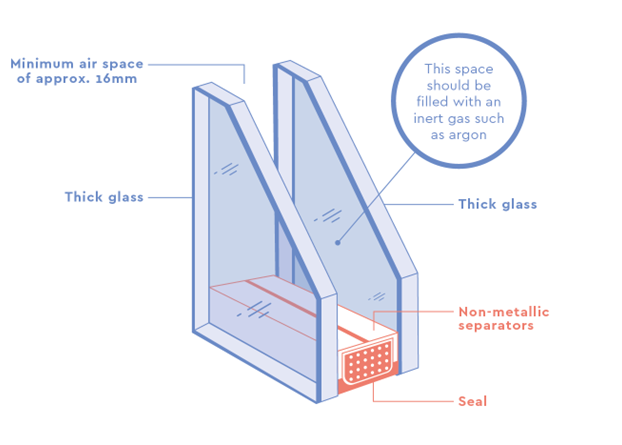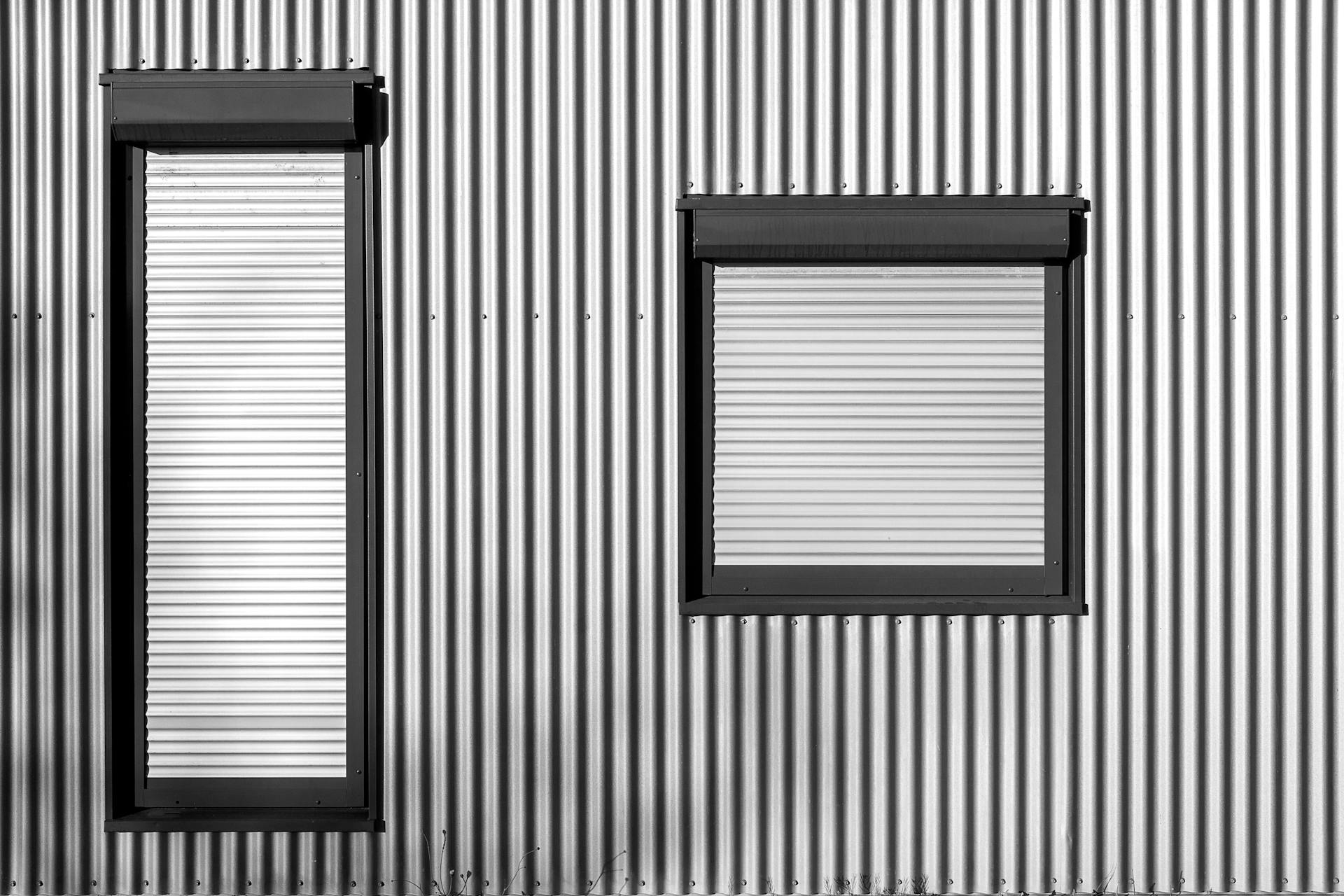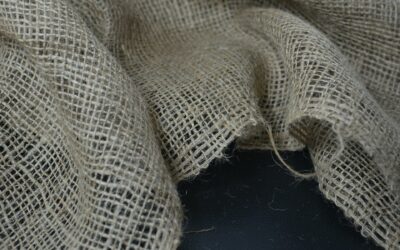This is one of a series of articles developed by students from ESCP Business School’s Bachelor’s degree in Business.
Our explicit thanks to:
- Shade Okewale-Retat:
- Laura Martins Queiroz
- Louis Sauvat
- Carlos Herzog Oldenburg
- Gaspard Soulier
- Colton Voorhees
Aluminium and Wood | Sustainable Choices for Doors and Windows
When it comes to building or renovating a home, it’s easy to get caught up in the aesthetics—paint colors, tile patterns, lighting fixtures. But some of the most important decisions are the ones that aren’t always obvious at first glance. Doors and windows, for example, play a huge role in a home’s energy efficiency, comfort, and environmental footprint. Choosing the right frame materials isn’t just a technical detail—it’s a chance to make a meaningful, lasting impact.
In today’s world, where climate change and sustainable living are more relevant than ever, it’s crucial for homeowners to consider how every part of their home contributes to a greener planet. From the type of materials used to how those materials perform over time, everything matters.
Wood, aluminium, and PVC all offer different benefits, and making an informed choice can lead to a home that not only looks good but also feels good to live in—both ethically and practically.

Wooden Frames: A Classic, Eco-Friendly Option
There’s something timeless about wooden window and door frames. Maybe it’s the warm texture, the natural grain, or the feeling of connection to nature. But wooden frames are more than just a nostalgic nod to traditional design—they’re one of the most eco-conscious choices available, especially when the wood is responsibly sourced.
Certified by organizations like the Forest Stewardship Council (FSC), sustainably harvested wood helps protect forests and maintain biodiversity. It’s a renewable resource, which means that when managed properly, it can be replenished without depleting natural ecosystems. Plus, wood acts as a natural carbon sink, locking in carbon dioxide that would otherwise contribute to global warming.
On top of that, wood is an excellent natural insulator. It helps keep homes warm in the winter and cool in the summer without relying heavily on artificial heating or cooling systems. That translates to real savings on energy bills and a smaller carbon footprint.
Of course, not all wooden frames are created equal. Choosing high-quality hardwoods like oak or mahogany can mean a longer lifespan, while sustainably sourced softwoods like pine offer a balance between eco-friendliness and affordability. Thanks to modern treatments—think pressure treatments, UV-resistant finishes, and natural oils—today’s wooden frames are more resilient than ever.
With regular maintenance, they can last for decades, aging beautifully while continuing to perform well.
Aluminium Frames: Durable, Modern, and Recyclable
If you’re looking for something sleek, low-maintenance, and built to last, aluminium frames might just be your go-to option. While they offer a more modern look, aluminium frames also come with serious environmental credentials.
One of aluminium’s biggest advantages is its durability. It doesn’t warp, rot, or corrode, which makes it perfect for harsh environments, whether it’s salty coastal air or humid climates. This resilience means fewer replacements and less waste over time.
But what makes aluminium truly stand out is its recyclability. It can be recycled endlessly without losing strength or quality. And when recycled, aluminium uses up to 95% less energy compared to being made from raw materials.
Companies like Reynaers Aluminium and Schüco are taking this a step further by incorporating recycled content into their products, directly supporting a circular economy where materials are reused rather than thrown away.
Now, it’s true that aluminium is a good conductor of heat, which isn’t ideal for insulation. But thanks to innovations like thermal breaks—essentially insulating layers built into the frames—this issue can be significantly reduced. Pair that with double or triple glazing, and aluminium frames can perform impressively in terms of energy efficiency.
PVC Frames: Budget-Friendly, Insulating, and Recyclable
For homeowners on a budget who still want solid performance, PVC (polyvinyl chloride) frames can be a smart pick. They naturally resist heat transfer, meaning your home stays warmer in the winter and cooler in the summer without much effort.
Yes, PVC has had a bad rap in the past due to the chemicals involved in its production. But the industry has made huge strides in sustainability. Today’s PVC frames, particularly those made by companies like Veka and Deceuninck, are lead-free and designed to be recyclable. Some manufacturers have closed-loop recycling systems in place that take old PVC frames, break them down, and reuse the material in new products.
Besides being energy efficient, PVC frames are incredibly low-maintenance. No painting, no staining—just a quick clean now and then.
And with UV-resistant coatings available, they can maintain their look and integrity for years. Reinforced PVC options can even handle larger window spans, which makes them more versatile than they might first appear.
You may be interested in: Build Green, Live Clean | A Casual Guide to Sustainable House Materials
The Essential Role of Double and Triple Glazing in Energy Efficiency
It’s not just about the frames. The type of glass you choose can make or break your home’s energy performance. Double glazing—which uses two panes of glass with an insulating air or gas layer in between—has become a standard in sustainable homes for good reason.
Compared to single-pane windows, double glazing can cut heat loss by up to 50%. That means more stable indoor temperatures, lower energy use, and less stress on your HVAC system. It also reduces noise pollution, which is a huge bonus if you live in a busy area.
Triple glazing takes things a step further, offering even better insulation. It’s especially useful in colder climates, though its added cost might not be necessary in milder regions.
For best results, look for windows with warm-edge spacers -which reduce heat transfer around the edges- and Low-E coatings -which reflect heat back into the room in winter and keep it out in summer-.
The Importance of Making Sustainable Choices for Your Home
At the end of the day, building a sustainable home isn’t about perfection. It’s about making thoughtful, informed choices that add up over time. Choosing the right doors and windows is one of those small decisions that can have a big impact—on your energy bills, your home’s comfort, and the planet.
Wooden frames offer natural beauty and a low carbon footprint. Aluminium brings unmatched durability and recyclability. PVC offers insulation and affordability, with increasing options for sustainable manufacturing. When combined with high-quality glazing, any of these frame types can contribute to a home that’s energy efficient, resilient, and environmentally responsible.
Sustainable homes aren’t just a trend—they’re the future.
And with each smart choice, we get one step closer to a world that’s healthier for everyone.
Sources
- JELD-WEN: FSC-Certified Wooden Frames. (2023)
- Reynaers Aluminium: Energy-Efficient Aluminium Windows. (2023)
- Schüco: Thermal Break Aluminium Frames. (2023)
- Veka: Recycled PVC Windows. (2023)
Images
- Glass Forum
- Jan van der Wolf, Pexels





0 Comments